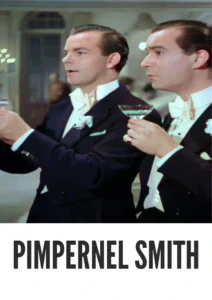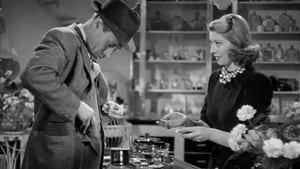Video Sources 0 Views

Synopsis
Archaeology, Espionage, and Heroism: Pimpernel Smith (1941) in Stunning Color

Delve into a world of wartime intrigue with Pimpernel Smith, a gripping espionage adventure from 1941, now beautifully colorized for a viewing experience like never before. Starring Leslie Howard, who also directed, this film delivers a thrilling blend of suspense, action, and heroism as its protagonist thwarts the Nazis. Also known as Mister V, this HD download brings a timely piece of cinematic history to your screen.
Pimpernel Smith Storyline: A Daring Rescue Mission
Pimpernel Smith follows the exploits of Professor Horatio Smith (Leslie Howard), a seemingly absent-minded archaeology professor who is, in reality, a cunning agent dedicated to rescuing victims of Nazi persecution before the war.Under the guise of an archaeological dig, Professor Smith leads a group of students into pre-war Germany. However, his true mission is to help those being persecuted by the Nazis escape to freedom. Facing constant danger and suspicion, Smith uses his wit, charm, and daring to outsmart the Gestapo, led by the ruthless General von Graum (Francis L. Sullivan), and secure the safe passage of refugees to neutral countries. The film culminates in a tense and exciting series of escapes and confrontations, showcasing Howard’s skill as both an actor and director. Ultimately, Pimpernel Smith is a thrilling and inspiring story of courage, resistance, and the triumph of good over evil during a dark chapter in history.
Movie Cast
The film features a talented cast of actors who bring this heroic story to life:
- Leslie Howard as Professor Horatio Smith / Pimpernel Smith
- Francis L. Sullivan as General von Graum
- Mary Morris as Ludmilla Koslowski
- Hugh McDermott as David Maxwell
- Raymond Huntley as Schmidt
Movie Genre
Pimpernel Smith falls into the genre of wartime espionage adventure, with elements of suspense and action.
Historical Context: Wartime Cinema and British Propaganda
Released in 1941, Pimpernel Smith reflects the concerns and anxieties of a world at war. The film was produced during a time when British cinema played a crucial role in boosting morale and galvanizing support for the war effort. Pimpernel Smith is a testament to the power of cinema as a tool for propaganda and inspiration.
Colorization Details
This colorized version of Pimpernel Smith has been meticulously restored using modern digital techniques, enhancing the visual appeal while preserving the film’s original atmosphere. The colorization process involved carefully analyzing the grayscale tones of the original black and white footage and assigning appropriate colors to each scene. While the specific software used remains proprietary, the techniques employed included advanced algorithms for color palette selection and image enhancement. This painstaking process brings new life to the characters and settings, making the story even more engaging for modern audiences. While some may debate the merits of colorizing classic films, it introduces these films to a broader audience, ensuring their legacy for future generations.
Technical Details
- Director: Leslie Howard
- Screenplay: Anatole de Grunwald, Roland Pertwee
- Based on: the novel The Scarlet Pimpernel by Baroness Orczy
- Cinematography: Mutz Greenbaum
- Edited by: Clive Donner
- Production Company: British National Films
- Distributed by: Anglo-Canadian Film Distributors
- Runtime: 121 minutes
Technical Specifications
- Download Format: MP4
- Resolution: HD (1080p)
- Compatibility: Compatible with most devices, including smartphones, tablets, computers, and smart TVs.
Reviews and Critical Reception
Pimpernel Smith (1941) is a compelling wartime adventure that showcases Leslie Howard’s talent as both an actor and director. While it may be seen as a propaganda piece, it remains a thrilling and inspiring story of courage and resistance in the face of tyranny. As a timely and relevant film, Pimpernel Smith offers a unique perspective on the challenges and sacrifices of World War II.
FAQs
- Q: What is Pimpernel Smith about?
- A: Pimpernel Smith is a wartime espionage adventure about an archaeology professor who rescues victims of Nazi persecution.
- Q: Is Pimpernel Smith (1941) a well-known film?
- A: While not as widely known as some other war movies, Pimpernel Smith is a notable example of British wartime cinema and a showcase for Leslie Howard’s talents.
- Q: Is this version of Pimpernel Smith colorized?
- A: Yes, this version has been professionally colorized to enhance the viewing experience.
- Q: What makes Pimpernel Smith interesting for classic film fans?
- A: Pimpernel Smith offers valuable insights into British cinema during World War II.
- Q: What is the download format?
- A: The download format is MP4, which is compatible with most devices.
- Q: What resolution is the download?
- A: The resolution is HD (1080p), providing a high-quality viewing experience.
Download Now in HD!
Watch Pimpernel Smith Today!












